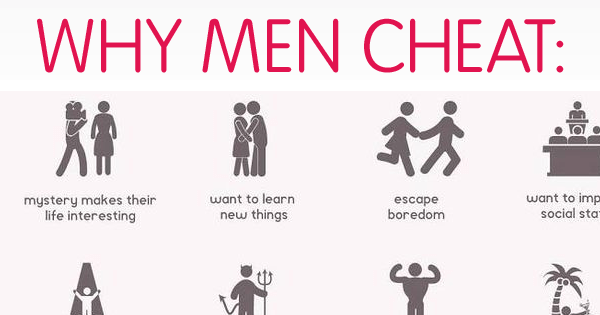Introduction: When Love Turns into a Trap
At first, almost every relationship feels intoxicating. You laugh more, dream bigger, and imagine a future wrapped in endless possibilities. But love can also go wrong—sometimes in ways that are so subtle you don’t even notice until you’re exhausted and questioning your worth.
Toxic patterns don’t usually show up with warning signs. They arrive quietly, wrapped in words like “passion,” “loyalty,” or “care.” They may feel normal, especially if you’ve grown up seeing them in family dynamics, movies, or even among friends. But the truth is, toxic love doesn’t nurture; it drains. It doesn’t empower; it traps.
In today’s fast-paced world, shaped by digital culture and shifting relationship norms, being aware of these destructive patterns is crucial. If you want love that heals instead of hurts, you must recognize the traps before they consume you.
1. Codependency: When Caring Becomes Controlling
Codependency often looks noble—sacrificing everything for your partner. But in reality, it’s an unhealthy attachment where one person loses themselves in the name of “love.”
Real-life example
Imagine a woman who skips her dream job abroad because she worries her partner can’t cope without her. He praises her sacrifice, but over time, resentment grows. She feels stuck, and he becomes overly dependent on her for happiness.
Why it happens
Codependency often stems from childhood environments where love was conditional. If you had to earn affection by meeting someone else’s needs, you may repeat the pattern in adulthood.
Long-term effects
- Resentment builds when personal needs are ignored.
- Emotional exhaustion leads to burnout.
- One partner becomes controlling, the other powerless.
Healthier alternative
Practice interdependence, where both partners support each other while maintaining independence. Pursue hobbies, friendships, and goals outside the relationship. This strengthens—not weakens—the bond.
Psychology Today explains that codependency is often mistaken for loyalty, but it ultimately stifles growth.
2. Jealousy Disguised as Passion
Jealousy is one of the most normalized toxic patterns. Movies often show jealous partners as deeply in love, but in truth, jealousy erodes trust.
Case scenario
A man insists on knowing where his girlfriend is at all times. He calls it “caring,” but she feels suffocated. At first, she mistakes his intensity for devotion. But later, she realizes it’s control disguised as passion.
Why jealousy is toxic
- It reflects insecurity, not love.
- It shifts the focus from trust to suspicion.
- It creates unnecessary conflicts and power struggles.
The cost of unchecked jealousy
Over time, the relationship turns into a constant investigation. One partner feels accused, while the other feels anxious. Eventually, both lose peace.
Healthier alternative
Replace jealousy with trust-building habits:
- Share daily updates willingly, not out of fear.
- Establish clear boundaries about privacy.
- Celebrate your partner’s independence instead of resenting it.
3. Emotional Manipulation: The Silent Poison
Manipulation is one of the hardest toxic traits to detect because it’s subtle. Instead of shouting, manipulators whisper doubts into your ear until you question yourself.
Example of gaslighting
Your partner insists, “That never happened, you’re just too sensitive.” Over time, you stop trusting your memory and even apologize for things that weren’t your fault.
Manipulative tactics to watch for
- Guilt-tripping: “After all I’ve done for you, this is how you repay me?”
- Gaslighting: Twisting facts so you doubt your reality.
- Emotional withdrawal: Refusing to speak or give affection until you comply.
The hidden damage
Manipulation kills self-trust. You become dependent on your partner’s version of events, making it easier for them to control your decisions.
Healthier alternative
Choose direct communication. Conflicts should focus on the problem, not on punishing the person. Instead of silent treatment or guilt-trips, both partners should voice needs openly.
4. The Drama Cycle: Fighting, Breaking, Reconciling
Some couples confuse constant drama with passion. They fight, break up, and make up dramatically—believing the chaos proves their love.
Why it feels addictive
The brain releases dopamine after reconciliation, creating a high that feels like “proof” of deep love. But the lows are damaging, leaving both partners emotionally drained.
Hidden consequences
- Emotional whiplash damages mental health.
- Neither partner feels stable or safe.
- Long-term trust collapses under repeated breakups.
Real-world parallel
Think of celebrity couples whose public breakups and reunions dominate headlines. It may look thrilling, but behind the scenes, it’s often emotionally exhausting.
Healthier alternative
Instead of chasing intensity, cultivate stability and excitement in healthier ways—travel, shared projects, or learning new skills together. True love doesn’t require constant chaos to feel alive.
5. Over-Dependency on Social Media Validation
In today’s digital age, many couples fall into the trap of measuring love through online validation.
Example
A woman feels unloved because her boyfriend doesn’t post her on Instagram. He argues that privacy matters, but she equates silence with shame. Their bond suffers because it’s tied to public approval.
Why it’s dangerous
- Social media creates unrealistic comparisons.
- It turns intimacy into performance.
- Arguments arise over likes, comments, or posts.
Research insight
A Pew Research study found that younger couples often face more stress due to online expectations, proving how digital culture intensifies insecurities.
Healthier alternative
Keep the relationship private where it matters. Share online if you wish, but don’t make validation the foundation. Real love thrives offline.
6. Love-Bombing: Too Much, Too Soon
Love-bombing often appears romantic: extravagant gestures, endless praise, constant communication. But it’s usually a strategy to gain quick control.
The cycle of love-bombing
- Overwhelming affection in the beginning.
- Pushing for rapid commitment.
- Sudden withdrawal, leaving the other partner confused.
Real-life example
A man showers a woman with gifts in the first week, saying she’s “the one.” When she sets boundaries, his affection disappears, revealing the manipulation underneath.
Why it’s toxic
- Creates dependency on constant validation.
- Confuses intensity with genuine connection.
- Makes the victim feel guilty for asking for space.
Healthier alternative
Healthy love takes time. Build intimacy gradually, letting trust grow with consistency rather than intensity.
7. Comparing Your Partner Constantly
Comparison kills gratitude. Whether with exes, friends, or strangers online, measuring your partner against others leads to dissatisfaction.
Example
Telling your partner, “My ex always bought me flowers,” doesn’t inspire growth—it creates insecurity.
Why it’s damaging
- It signals that your partner will never be “enough.”
- It discourages genuine effort.
- It undermines appreciation for who they truly are.
Healthier alternative
Practice gratitude. Acknowledge your partner’s unique qualities instead of highlighting their flaws. This mindset shift builds love instead of resentment.
8. The Silent Treatment: A Dangerous Weapon
Silence may feel like power, but in relationships, it becomes punishment.
Why couples use it
Some believe silence avoids conflict. Others use it to control. Either way, it leaves problems unsolved.
Consequences
- Creates emotional distance.
- Builds resentment in the ignored partner.
- Teaches avoidance rather than resolution.
Healthier alternative
Take space with communication. Say, “I need an hour to calm down,” instead of shutting down completely. That way, both partners know the silence isn’t rejection—it’s regulation.
9. Controlling Behavior: When Love Feels Like a Cage
Control in relationships doesn’t always look like dominance in movies—someone yelling orders or locking doors. It’s often far more subtle, slipping into everyday interactions disguised as love, care, or protection. Over time, this “invisible leash” can suffocate a partner, turning what should be freedom and partnership into a cage.
What Controlling Behavior Really Means
At its core, controlling behavior is about power. Instead of relating as equals, one partner attempts to dictate how the other lives. This can manifest in decisions about:
- Who you spend time with.
- How you dress.
- What career choices you pursue.
- Even how you express emotions.
It’s important to note that not all control is obvious. Many people don’t even realize they’re being controlled until years into the relationship.
Subtle Signs of Control Disguised as Care
Controlling behavior often masquerades as concern or “helpfulness.” On the surface, it sounds loving, but the underlying message is: I know better than you.
- Fashion policing: “Don’t wear that dress, it’s too revealing. I don’t want other men staring at you.”
- Friendship restrictions: “I don’t like your best friend; she’s a bad influence. You shouldn’t see her anymore.”
- Financial dominance: “Let me handle all the money—you’re not good with budgeting.”
- Career interference: “Why take that job? I won’t see you enough. Just stay here with me.”
- Emotional censorship: “You’re too sensitive. Stop crying, it’s not a big deal.”
Individually, these comments may sound harmless. But when repeated, they chip away at independence, decision-making, and self-confidence.
Psychological Roots of Control
Why do some partners become controlling? The reasons often trace back to insecurity, fear, or past experiences:
- Fear of abandonment – A partner may try to control to keep the other from leaving.
- Low self-esteem – They believe if they don’t dictate terms, they’ll be rejected.
- Modeling childhood dynamics – If someone grew up in a home where control equaled love, they may repeat it in adulthood.
- Desire for dominance – In some cases, control is less about fear and more about ego—the belief that one person should “lead” while the other follows.
In all cases, controlling behavior reflects inner insecurity projected outward.
The Emotional Cost of Control
Being in a controlling relationship erodes a person’s sense of self.
- Loss of autonomy: You feel like a child seeking permission for adult decisions.
- Chronic anxiety: You constantly second-guess your actions to avoid upsetting your partner.
- Identity erosion: Your dreams, hobbies, and friendships slowly fade away.
- Resentment: Even if you comply, resentment grows like a silent poison.
Long-term, controlled partners may experience depression, low self-worth, and even trauma symptoms similar to those seen in emotionally abusive relationships.
Real-Life Scenarios
- Case 1: Fashion as a battleground
Lisa loved wearing bright, bold outfits. Her boyfriend claimed he “just wanted to protect her” from unwanted attention. Over time, she stopped wearing her favorite clothes. What began as one “suggestion” turned into an unspoken rule. Eventually, Lisa realized she no longer recognized herself in the mirror. - Case 2: Financial dependency
James told his wife, “I’ll handle all the bills, don’t worry about money.” At first, she felt cared for. But years later, when she wanted to leave, she realized she had no financial literacy, no savings in her name, and no independence. The control was disguised as generosity. - Case 3: Social isolation
A man pressured his girlfriend to cut ties with her male friends, saying it was “for the sake of their relationship.” Slowly, she also lost touch with female friends who disagreed with his views. By the time she noticed, her support system had vanished.
These examples reveal a common theme: control grows slowly. It doesn’t start with handcuffs; it starts with “concern.”
Cultural and Social Factors
In some cultures, controlling behavior is normalized. Traditional gender roles may frame dominance as “leadership” or submission as “love.” Social media also plays a role, where public displays of “possessive love” are glamorized. For example, jealous or controlling partners are sometimes praised for “caring too much,” which blurs healthy boundaries.
Why Some People Stay
Leaving controlling relationships is not simple. Victims may stay because:
- They believe the control equals love.
- They fear retaliation if they resist.
- They’ve been isolated from friends and family.
- They’ve lost confidence in their ability to make independent choices.
Understanding this helps us replace judgment with empathy when discussing why people don’t just “walk away.”
Breaking Free: Healthy Alternatives to Control
A relationship thrives when it’s based on mutual respect and freedom—not authority.
Healthy dynamics include:
- Autonomy: Each partner makes personal decisions without fear.
- Trust: You don’t need to monitor each other’s every move.
- Shared decision-making: Choices about money, family, and future are made together.
- Respect for individuality: Love supports your dreams instead of limiting them.
For example, instead of saying, “Don’t take that job, I need you here,” a healthy partner says, “I’ll miss you, but I’ll support your career move.”
Practical Steps to Overcome Control
- For the controlling partner:
- Acknowledge insecurity and seek therapy.
- Replace fear-driven rules with open dialogue.
- Learn to respect boundaries as acts of love, not threats.
- For the controlled partner:
- Rebuild self-confidence by reconnecting with hobbies and friends.
- Set clear boundaries and communicate them.
- Seek external support—therapists, trusted friends, or support groups.
Why Respect Beats Control
Respect is the foundation of lasting love. When partners feel free to be themselves, intimacy flourishes. Control may provide short-term security for the controller, but it suffocates long-term growth. True love celebrates individuality instead of suppressing it.
In short: Controlling behavior is one of the most deceptive toxic love patterns. It starts small, but its ripple effects can strip a partner of autonomy, confidence, and joy. If love feels like a cage, it’s not love—it’s control. Healthy love is freedom.
10. Avoiding Tough Conversations
Many couples believe avoiding conflict preserves peace. In truth, avoidance delays explosions.
Why it happens
Fear of rejection, fear of escalation, or discomfort with vulnerability.
Consequences
- Resentments pile up quietly.
- Issues repeat without resolution.
- Communication becomes shallow.
Example
A couple avoids talking about finances because it leads to arguments. Years later, debt has piled up, and trust is shattered.
Healthier alternative
Lean into discomfort. Address problems directly, even if awkward. Vulnerable conversations often prevent long-term damage.
11. Neglecting Self-Care for the Relationship
Self-neglect often looks like love. You give everything—time, money, energy—to your partner, while ignoring your own needs.
Why it feels noble
Sacrifice is often romanticized in culture. But too much giving without balance leads to emptiness.
Long-term effects
- Burnout.
- Loss of self-identity.
- Resentment when efforts go unappreciated.
Healthier alternative
Prioritize self-care. A healthy relationship thrives when both partners are whole individuals, not exhausted caretakers.
12. Keeping Score Instead of Forgiving
Relationships are not scoreboards. When every mistake is recorded, love becomes a debt collection system.
Examples
- “I cooked last week, so you owe me.”
- “You hurt me last month, so I won’t forgive you.”
Why it’s toxic
It prevents growth. Partners stay stuck in the past, unable to move forward.
Healthier alternative
Practice forgiveness. Learn lessons from mistakes, but don’t weaponize them. Growth comes from compassion, not accounting.
13. Emotional Unavailability
A relationship cannot thrive if one partner keeps emotions locked away.
Signs of emotional unavailability
- Refusing to discuss feelings.
- Avoiding intimacy.
- Distracting with work, hobbies, or friends.
Why it’s harmful
One partner feels invisible, while the other avoids vulnerability. Over time, intimacy disappears.
Healthier alternative
Choose vulnerability. Share fears, dreams, and insecurities. Openness deepens connection and fosters trust.
14. Table: Toxic vs. Healthy Patterns
| Toxic Love Pattern | Why It’s Harmful | Healthy Alternative |
|---|---|---|
| Codependency | Loss of identity, imbalance | Interdependence |
| Jealousy | Erodes trust, creates control | Trust and independence |
| Emotional manipulation | Weakens self-trust, control | Honest communication |
| Drama cycles | Causes instability, stress | Stability and healthy excitement |
| Social media dependence | Seeks external validation | Private intimacy and balance |
| Love-bombing | Masks control, overwhelms | Gradual, authentic bonding |
| Silent treatment | Creates resentment, unresolved conflict | Healthy space with communication |
| Control | Restricts freedom, breeds resentment | Respect for autonomy |
| Score-keeping | Blocks forgiveness | Genuine forgiveness |
| Emotional unavailability | Prevents intimacy | Vulnerability and openness |
15. Breaking Free from Toxic Love
Breaking free from toxic love is not only about leaving—it’s about unlearning. If you grew up around unhealthy relationships, toxicity may feel familiar, even comfortable. Recognizing it is the first act of courage.
Steps to freedom
- Reflect: Identify which patterns dominate your relationship.
- Communicate: Share openly with your partner. Awareness can spark change.
- Set boundaries: Boundaries protect love from decay.
- Seek professional help: Therapy provides tools to heal deeper wounds.
- Choose wisely: Sometimes, the healthiest choice is walking away.
Breaking toxic patterns requires both partners’ effort. But even if one refuses, you always have the choice to protect your well-being.
Conclusion: Choose Love That Heals, Not Hurts
Love should never feel like a prison or a performance. It should feel like freedom, safety, and growth. Toxic patterns may seem small at first, but left unchecked, they corrode intimacy, trust, and happiness.
You deserve a relationship that makes you feel seen, valued, and free. By avoiding toxic traps and embracing healthier patterns, you give yourself the gift of a love that doesn’t just survive—it thrives.





